This piece is based off a presentation that the author delivered at a conference in Seoul on July 3, 2017.
Amidst the clamor and concern caused by North Korea’s July 4th ICBM test, the Trump administration has been criticized for not having a North Korea policy. In fairness, the outlines of the administration’s policy have been clear for some time.
Today, as the Trump administration faces its most urgent foreign policy crisis, the real question is not whether there is a North Korea policy. Rather, it is whether the administration can implement its emerging policy, which is facing obstacles, many of them self-imposed. The administration’s response to the latest North Korean challenge will soon bring the policy’s flaws and shortcomings into bold relief.
Earlier in the year, the administration tried a military-centric approach that unnerved friends and allies, who thought Washington was preparing for war. But that approach failed to intimidate the North Koreans, who seemed convinced Trump was bluffing and responded with threats of their own and by accelerating their missile program.
The administration then wisely shifted to a more balanced approach, described as “maximum pressure and engagement,” that combined tough rhetoric, increased sanctions, and a willingness to talk. The administration’s judgment in pursuing this course was that only more powerful and comprehensive measures, enforced and applied in conjunction with allies and partners, could convince North Korean leader Kim Jong Un to give up his nuclear program, and that this needed to be coupled with a call for diplomacy and “meaningful” negotiations with Pyongyang.
But Washington also concluded that North Korea was not ready for serious negotiations. Accordingly, the administration’s strategy was to compel Pyongyang to get serious by squeezing the regime, cutting off its sources of foreign exchange, impeding its ability to finance its weapons programs, hemming it in diplomatically, and pressuring it militarily.
Seen in its entirety, the emerging approach resembles the new approach some experts have advocated: To change North Korea’s course, the United States must convince Kim Jong Un that the stability of his regime may be at risk if he does not denuclearize. This approach seeks to challenge what many see as the main purpose of North Korea’s development of nuclear weapons—ensuring the survival and stability of the regime.
But the new approach is not without flaws and shortcomings, some of which could derail the Trump administration’s policy.
Does U.S. policy have what it takes?
The first shortcoming is whether the administration has the determination to do what it says it intends to do.
Distracted by investigations, riven by internal divisions, and under pressure to deliver progress, the temptation is strong to return to the habits of previous administrations and settle for half measures that do little or nothing to end North Korea’s nuclear program, instead creating only the appearance of progress.
To break with past approaches, the administration should force Kim Jong Un to choose between nuclear weapons and survival – an approach that has never been tried. Kim is nothing if not a rational actor and, if shown a credible way out of his dilemma that preserves his rule and offers hope for systemic survival, he would likely opt for the latter over the prospect of national suicide.
But compelling Kim to make that choice requires applying overwhelming pressure in the economic, trade, banking, political, diplomatic, human rights, military, cyber, and covert arenas.
It would involve isolating North Korea to an unprecedented degree, drying up its sources of foreign exchange, cutting off its trade, creating divisions within its elites, encouraging defections, applying military pressure, using cyber actions to affect its economy, painting the darkest possible picture of the regime’s future for its leadership and the elites, and undermining the regime’s confidence in its ability to survive.
The Trump administration’s recent rhetoric suggests it aspires to do this. But its approach so far suggests its aspirations greatly exceed its concrete actions.
Now, with the North’s ICBM test posing a dramatic new challenge to American and allied security, the administration’s mettle and determination are being tested. It remains to be seen whether it is up to this challenge.
Strength or capitulation?
Meanwhile, the administration is being peppered with proposals, some of which could lead to the acceptance of a nuclear-armed North Korea and the undermining of U.S. and allied security. There are calls to suspend or scale back U.S.-ROK joint exercises in exchange for an unmonitored or unverifiable freeze of Pyongyang’s nuclear weapons program. Such steps would weaken the bilateral alliance with Seoul and accept the North Korean fiction that its nuclear weapons are a legitimate response to the U.S.-ROK alliance. And they would allow Moscow and Beijing—eager sponsors of this idea—to achieve their longstanding goal of undermining the U.S. security posture in Northeast Asia
There are also calls for the administration to abandon the goal of denuclearization in favor of seeking “restraint” on parts of the North’s nuclear weapons program, leaving the core elements of Pyongyang’s nuclear threat in place.
For the Trump administration, following ill-conceived advice in order to create the appearance of progress and the illusion of security would be a major mistake.
Who’s in charge?
To deal effectively with North Korea, the Trump administration must coordinate its policy among numerous U.S. agencies, as well as bring allies, partners and the international community on board. Doing that while hundreds of policy-level positions at the State Department and other agencies remain unfilled seems impossible.
Just as an army cannot fight a war without colonels, majors, and captains, a government cannot implement a complex and finely tuned policy without the experts necessary to ensure it is carried out well. A policy failure caused by a failure to adequately staff the government would be a tragic, self-inflicted wound.
China: Predictable disappointment
For too long, the Trump administration hoped China would solve the problem. The administration seemed unable to grasp that China’s goals with respect to North Korea differ from those of the United States. Beijing values North Korean stability and the preservation of the regime more than it fears the implications of a nuclear-armed DPRK.
As Chinese interlocutors often remind us, Beijing fears peninsular instability and the consequences of reunification under Seoul. China therefore has no interest in a U.S.-orchestrated “maximum pressure” campaign that could bring about exactly what China fears.
Fortunately, the U.S. administration now appears to be shifting away from an approach that outsourced the North Korea problem—and U.S. and allied security—to China.
Will America lead?
One of the greatest weaknesses of the emerging policy involves the global perception of U.S. leadership.
To deal effectively with North Korea, the administration must bring to bear the leadership, deft diplomacy, and skillful employment of America’s moral authority necessary to carry out a comprehensive, internationally coordinated policy
Regrettably, U.S. withdrawal from the Trans-Pacific Partnership and the Paris Agreement on the climate, the president’s criticism of longtime allies, and American policies that are widely seen as unilateralist have undermined the effectiveness of Washington’s diplomacy, raised questions about U.S. reliability, and detracted from the deference that has traditionally been accorded to U.S. leadership.
The U.S. administration should reflect carefully whether its actions and words are alienating our allies and the international community and creating the impression that Washington is not prepared to lead the coalition that will be necessary for policy success.
The U.S.-ROK relationship: Moving out of sync?
U.S. policy towards North Korea can only be as effective as the strength of America’s alliance with South Korea. Today, the two allies share the goal of denuclearization, but each has a different vision of how to get there, with Washington focused on pressure and Seoul on engagement and reconciliation.
Staying on the same page will require hard work, particularly as Seoul seeks added autonomy in dealing with Pyongyang. The good news is Presidents Trump and Moon started off on the right foot in managing their differences at their recent summit. No less importantly, the July 4th ICBM test has shown the progressive government in Seoul the true face of Pyongyang, the necessity of strong missile defenses, and the central importance of the U.S.-ROK alliance. At the end of the day, Kim Jong Un may be the glue that keeps the alliance solidly together.
Warmbier and popular outrage
The true face of Pyongyang was also seen in the fate of young Otto Warmbier, the American tourist whose death may have been the result of torture. His tragic fate has contributed to American popular revulsion at the North Korean regime. It remains to be seen how much that revulsion, together with the American people’s concern that they are now in North Korea’s crosshairs, will influence U.S. policy.
Towards the endgame
Ironically, even if the Trump administration overcomes all obstacles and implements a tough, comprehensive, coordinated policy, its approach may fail. Kim Jong Un’s single-minded determination to threaten the United States could stymie Washington’s best efforts.
If that happens, the U.S. may be compelled to consider even starker options in order to denuclearize North Korea and defend the American homeland and U.S. allies. In the end, the administration may decide that the only way to do so is to end the Pyongyang regime. But America’s recent experience with regime change does not inspire confidence.
Another approach could be to work quietly with China, the ROK, Japan, and Russia to explore an alternative future for the Korean Peninsula that brings about Korean reunification under Seoul while easing traditional China’s security concerns, denuclearizing the peninsula, and providing for a united Korea’s security. Recent informal and unofficial dialogue among the parties suggests this approach is worth exploring.
Whatever the ultimate direction of U.S. policy, Pyongyang’s latest missile test has now raised the stakes in Northeast Asia and underscored the imminent threat to peace and stability posed by a dangerous regime. For that reason, it is time to think seriously about ending North Korea’s nuclear ambitions by creating a new order in Northeast Asia.
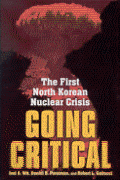
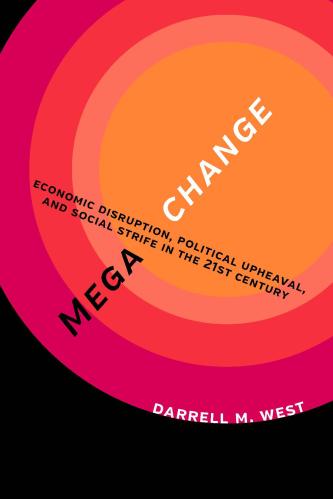

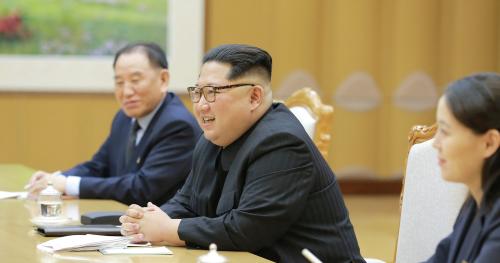
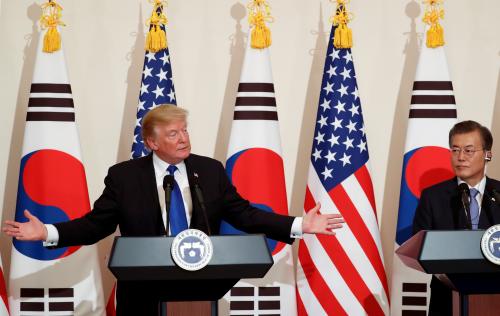
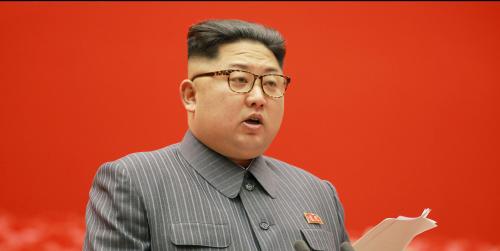

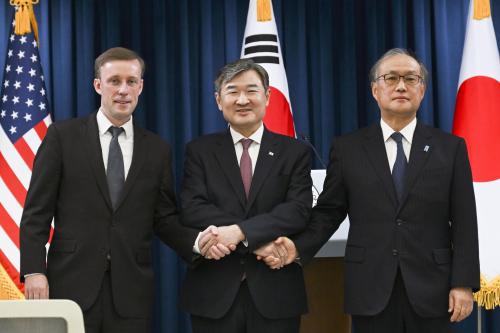
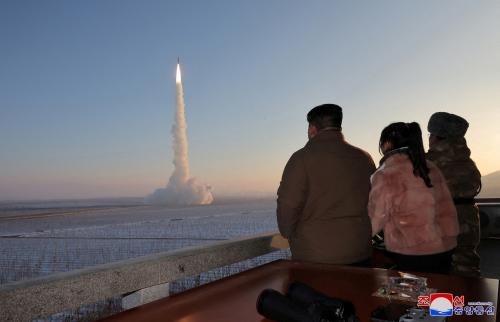
Commentary
The Trump administration’s North Korea policy: Headed for success or failure?
July 10, 2017